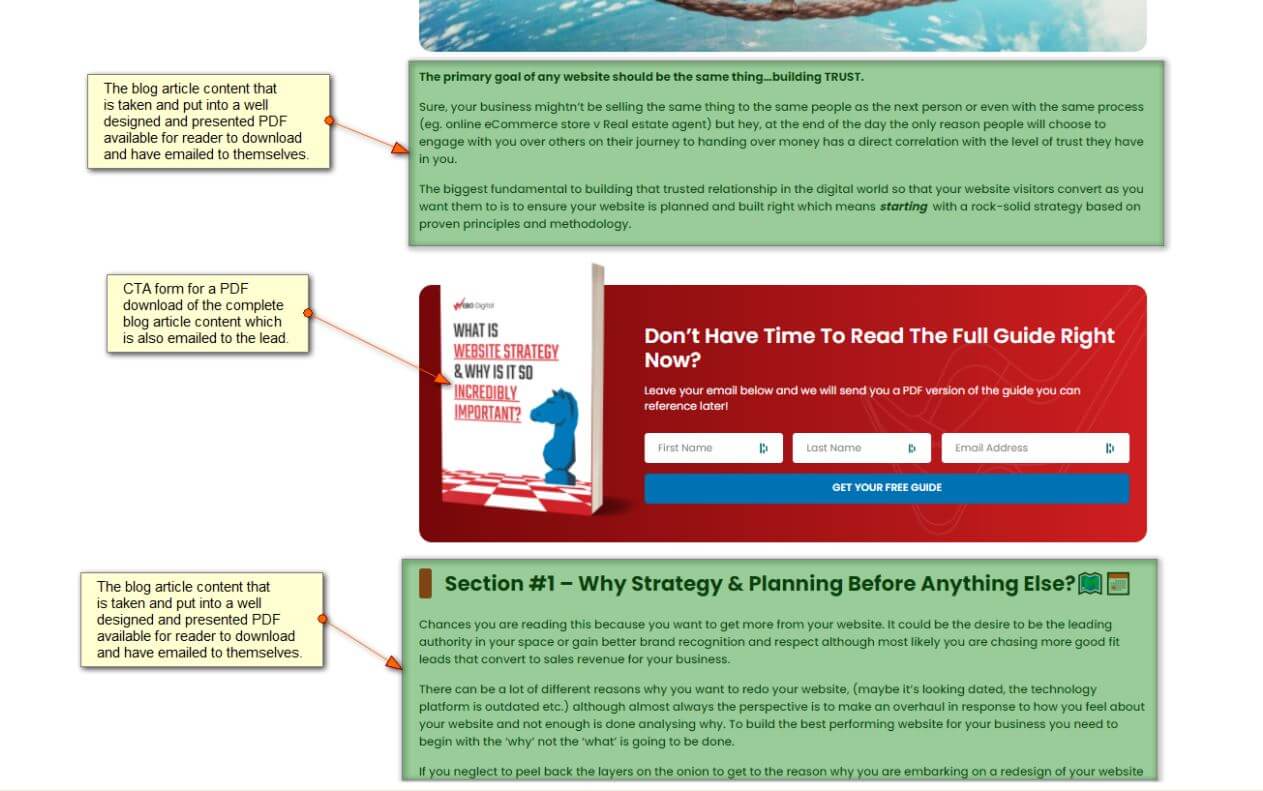
What The Heck Does Ali Baba & The 40 Thieves Have To Do With “Gated Content”?
Jerry Wallis
10 min read

“Ali Baba wiped the last beads of sweat from his brow as he surveyed the latest cartload of wood he had just finished chopping with his trusty axe and decided it would sell for enough to feed his family for another few days…
Just as he had finished securing his load for the journey back to his village he heard a distinct thump of horse hooves in the not too far distance and looked up to see through the forest clearing no less than three dozen bandits heading straight towards him!
It was a terrifying sight and although Ali was a very brave dude he knew these evil individuals belonged to the greatly feared ‘Bandit Gang’ and killed without mercy. He quickly pushed his cart deep into a low dense bush so it was obscured, climbed high into a nearby tree and hid whilst fervently hoping the disturbed foliage and timber he’d been working with would not be noticed.
The band of thieves pulled their horses up a mere stone’s throw from where Ali was hiding next to a large rocky outcrop where Ali could now see in no mistaking detail what menacing figures they really were. The leader in his flowing robes and glistening sword dismounted from his great stallion. He then walked across towards the stone face until he stood directly in front of it and with a deep and thunderous shout, bellowed out “Open Sesame!”
Ali could not believe with his own eyes what happened next. The massive stone wall turned on itself, withdrawing deep into a massive cavernous recess which revealed a pile as high of golden merchandise and purses of money he couldn’t have imagined in his wildest dreams…“
Now, that’s the beginning of an ancient and famous tale from the 18th century and whilst I don’t have the location of and a secret password to a treasure-laden cave to offer you… (Are you kidding! Why would I want to give that away?) we do want to use the analogy to help explain what the idea of ‘gated’ content means.
What Is “Gated Content”? 🔑🚪

“Gated content” in some measure relates to this folklore in the fact that the email address is the equivalent of the secret password that provides access to something of high value (booty) on the other side in exchange. Gated content is essentially anything that resides behind a form and requires the giving of some personal information in order to read, watch or interact with it. Examples can be; whitepapers, reports, eBooks, eGuides etc.
Now, here is why this is a two way street for both the reader and the website owner. The prospect not only gets access to a valuable piece of content but the providing of this email address also gives permission for the website owner to send them further relevant information in the future.
…AND if we as professional educational teachers are doing our marketing job properly, that email address should ONLY EVER receive content that is valuable, educational and helpful to the owner.
The ideal outcome of using gated content is that the subscriber (email address owner) is moved along the Buyers Journey with helpful and educational content that provides answers to their problem/s until they reach the point where they either convert into a paying customer or unsubscribe/unengage due to no longer being a good fit.
Problems With Gated Content 🥴🤔
First, expect your conversion rates to be significantly less if you gate your content.
There will be people who just think “Nah…I can’t be bothered filling out that form” and there is no question that content residing behind a form is also less likely to be shared on social media.
Then there is also this…
People are becoming tired of handing out their personal information just to receive spammy pitches and rubbish content hence that’s why the fake names and email addresses arrive… you know the ones;
whydoihavetogivemyemail@addresstodownload.com
Or worse…
Since the term “Inbound Marketing” was introduced back in 2005 by Hubspot founders Brian Halligan and Dharmesh Shah, marketers have since sought to attract leads with the strategy of creating content, content and well…just more content. Whilst the concept of inbound marketing and the strategy of creating helpful content that educates and attracts leads is a beautiful thing, it has also grown to bring some significant baggage.
It cannot be denied that there are some naive and just plain lazy people on the content creation bandwagon and the last few years have seen the internet become flooded with all types of helpful guides, eBooks, and templates on almost any subject you can imagine. In fact, one Boston based agency abandoned its inbound marketing title altogether to redefine and demonstrate what great content is all about.
“It’s the intent behind the content that matters” – Gary Vaynerchuk
When To Use “Gated Content” 👍✔️
However, this does not mean all is lost and the fact remains that if you are truly dedicated to understanding your buyer, seeking out their real-life challenges and committed to providing answers that will genuinely help them, there will always be a place for gated content.
As long as you establish yourself as an expert in your field and demonstrate you are serious about it, your prospects won’t mind giving you their details (in fact they will want to!)
When You Are Offering Very High-Value Content
There are certainly times when your prospective customers will be more than happy to complete a form to get your content.
This is most often when you have something exclusive, in-depth and provide information that is not readily available elsewhere. It might also be a tool or template that could offer significant timesaving or valuable shortcuts for your buyer.
If you are putting together comprehensive research reports involving thought leaders and industry experts in your industry that could provide a possible competitive advantage for your prospects, this too will certainly see willing participants in form submissions.
When Repurposing Previous Ungated Content
If you have been producing content for some time, there is a very good opportunity for some repurposing of previous articles. You may have covered a certain topic related to your business in different ways and formats for each sub-topic, for example, a manufacturer of children’s cubby houses may have done a number of content pieces, for example, as below;
- A blog article on the best way to prepare a good foundation for your child’s cubbyhouse & sandpit
- An infographic that showed the direct correlation between childhood memories of happiness and the types of playing activities they enjoyed
- A draft blueprint that enables you to draw a scaled version of your available space for a new cubby house.
All these different pieces of content could all be packaged up together into a beautifully designed PDF download that is then only available by submitting a form so that it can be emailed to you.
When Segmentation Is a High Priority
You can also use gated content when email list segmentation is a high priority in your marketing strategy. Gleaning extra details from your leads such as the industry/marketing the visitor works in, the number of people in their company, their position within the company etc can all help tremendously in driving targeted email content that will help conversion rates.
In fact, the email marketing platform company Mailchimp discovered from analysing over 9 million emails that segmented campaigns delivered more than 23% higher open rate results and 49% higher click-through rates compared to unsegmented campaigns!
When NOT To Gate Your Content 🙅♂️⚠️
When You Are Wanting Stronger SEO Rankings and Higher Traffic
Gated content is generally not accessible by search engines, so it means it does nothing to help your website rank organically in search engines, which in turn means it won’t help generate more traffic.
When You Are Focused on Building Brand Awareness
If your strategy includes reaching as far and wide as possible for exposure to your brand then it makes sense to leave your content freely available. Gating limits its shareability and is also less likely to be linked to other sites, which means losing out on potential SEO value.
You Don’t Have Your Buyer Persona Nailed Down
If you haven’t clearly defined who your ideal customer is (Buyer Persona) then it will be incredibly difficult to create content that delivers enough engagement value that your visitors will want to submit a form to access it.
You Have No (Or Very Minimal) Freely Accessible (Un-Gated) Content That Backs Up Who You Are
Remember that your brand and un-gated content will almost certainly influence your prospect’s view of what value they will receive from engaging with your gated content so be sure you have some extra “arrows in your quiver” to help cement your standing.
Your Content Is Too Early In The Buyers Journey (You’re Asking For Too Higher Commitment Too Early!)
You must build trust and provide value before asking for a commitment from your audience! Show them that you care and want to help them which will further build trust and engagement. If you come right out of the gate asking for an email address before doing so you will blow it.
You Don’t Have A Solid Lead Nurture Follow-up Strategy In Place
If you don’t have good lead nurture follow up automation in place, then gating your content is a poor idea.
You end up squandering resources on converting leads that end up dying off. You need to keep the relationship alive through triggered communications and alerts.
Lead scoring, tracking and optimisation are also great ways to help qualify warmer leads here as well.
Here’s How You Can Have Your Cake & Eat It When You ‘Un-gate’ Your Content 🍰😁
To “gate” or to “un-gate” is the burning question that is most often asked.
The honest answer is that there is no right answer. It all depends on the objectives and goals of your content strategy, although we do have another way to suggest…
A winning-edge strategy for getting the best of both worlds here, which we at WEBO Digital have found very successful, is to ungate the content and then offer the viewer the opportunity to download a PDF version with multiple CTAs throughout the page. Here is one of our blog content articles set up like this for you to see here 👈

This way your visitor can still get the content for free if they want and the qualified leads (which is the only ones you want anyhow) almost ALWAYS submit the form with their details to get a copy emailed to them.
And guess what…the email address is accurate, the lead is qualified and they want to hear more from you! 👌🎉
Topics
Published On
December 28, 2020

